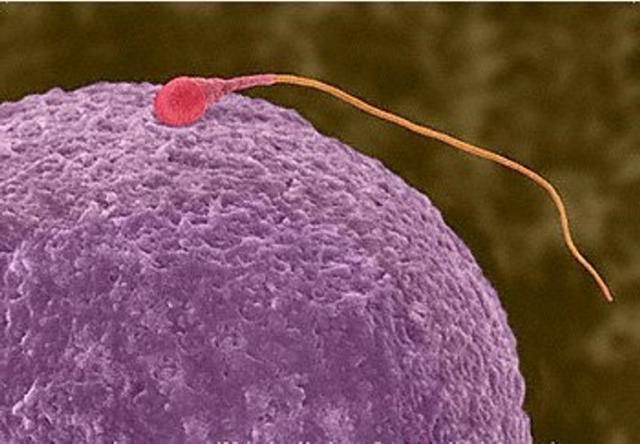Ovulation and conception: when and how do they occur?
Normally every month in the body of every womanreproductive age ripens egg. If after that, her fertilization takes place and successful implantation in the endometrium of the uterus, then pregnancy occurs. Otherwise, there will be another menstruation and maturation of a new egg in another ovary.
However, sometimes ovulation does not occur. If a year does not happen more than two times, then this is the norm. The constant absence of the output of a mature egg is called anovulation. With this diagnosis, you need to find out the cause and be treated.
Sometimes two ovulations occur during the cycle. This can be provoked by emotional experiences, hormone intake, violent sexual intercourse. If this happens rarely, then this too is the norm.
For women who do not immediately get pregnant, ovulation and conception become very important. Because the second without the first is impossible.
The egg is capable of being in the fallopian tubenot more than a day, and sometimes several times less. Therefore, conception after ovulation can occur only in this time interval, and then the probability is very small.
Spermatozoa after ejaculation can be expectedovum up to 3-4 days, but on the way to it they need to overcome a number of obstacles, including cervical mucus. Its consistency changes and becomes similar to egg whites precisely during ovulation. In the same period, spermatozoa can easily overcome it. Therefore, the greatest probability of conception is on the day of ovulation, it is 33%.
Those who want to become pregnant make a lot of efforts to determine this moment. Here, everyone chooses himself: to trust their sensations or to use modern methods, and maybe both.
First you need to determine the length of your cycle. If it is regular, it is likely that ovulation and conception occur approximately 14 days before it ends. However, the length of the second phase can range from 12 to 16 days. If it is shorter, then it is possible to suspect its insufficiency due to a shortage of progesterone. This can lead to unsuccessful attempts at conception.
The length of the first phase is more individual. However, if it exceeds 17 days, it is an occasion to consult a doctor for advice. In the first phase, the main hormone is estrogen, and in the second - progesterone, produced by the yellow body. It is formed on the site of the burst follicle. Progesterone is a hormone that supports pregnancy. Its shortage can lead to miscarriages at an early age.
The fertilized egg moves through the tube,then enters the uterus, and implantation takes place. All this takes 6-7 days. This time is very important, since if the movement will occur too quickly or slowly, pregnancy may not occur. In the case of obstruction of the fallopian tubes, implantation can occur directly in them. Then only timely diagnostics and measures will help to preserve the health and life of a woman.
In addition, a fertilized egg diesunder the influence of adverse factors or in the presence of any defects in it. It can be rejected after implantation, that is, an early miscarriage occurs. In this case, the woman does not even know that she was pregnant.
Ovulation and conception are processes,subject to various external factors. Especially those that lead to a change in the level of hormones: stress, strong physical activity, smoking, drinking alcohol, sexual life.
Thus, ovulation and conception occur inthe norm is quite easy in a woman's body, and sometimes even against her will. However, failure in the hormonal background and a number of other reasons may lead to their absence and call into question the possibility of pregnancy.
</ p>



